![]() an architect
an architect
 JP | EN
JP | EN
 JP | EN
JP | EN
 Photo: At Hatsukoma, a café whose building is an old folk house renovated by studio CATALYST. (Mr. Kadono, far right)
Photo: At Hatsukoma, a café whose building is an old folk house renovated by studio CATALYST. (Mr. Kadono, far right)Even though I was still a child, seeing the Nagata area burning and highways collapsing on TV made me realize that the earthquake damage was serious. I told my parents that I would go work as a volunteer, but they stopped me. I had a strong urge to do something for Kobe.
My wife’s mother used to live in a downtown tenement in Suma Ward, Kobe City, and it was a city filled with memories for my wife too. But the disaster was huge and most of the city was burned down.
Although the city looks pretty when you see it after reconstruction, the life before the earthquake has completely disappeared. My wife and I felt a sense of loss that is hard to describe, as if our heart and soul had disappeared.
As a city planner, it is a good thing that the city became safer, but it’s hard to accept it if the previous city vanishes. This experience made me realize that people can find their heart if there are traces of the old city left, and that it is best if the heart of the residents remains and is inherited in the city.

Komagabayashi is a village with a long history dating back to the Nara and Heian Periods. There is a labyrinth of narrow alleys, which is why it is called the City of Alleys. Despite the difficult problem of wooden-building congestion, the local residents love the atmosphere.
A general answer to this problem would be to widen the streets, but if that happens, people will lose their homes, and the structure of the town will change and we can no longer call it the City of Alleys anymore, can we? I believe that we need to protect the atmosphere of this town and at the same time renew the hardware and software.
I believe that the idea of community has the most immediate effect for disaster prevention. People in this neighborhood are so close that they borrow soy sauce from their neighbors.
Along with this project, we have made the Water Tap Agreement in Komagabayashi. Next to each house is a water tap, and when a disaster occurs, we attach one of the town’s hoses to the nearest water tap to extinguish fires. This is a kind of disaster prevention where the close bonds of a community play an important role.
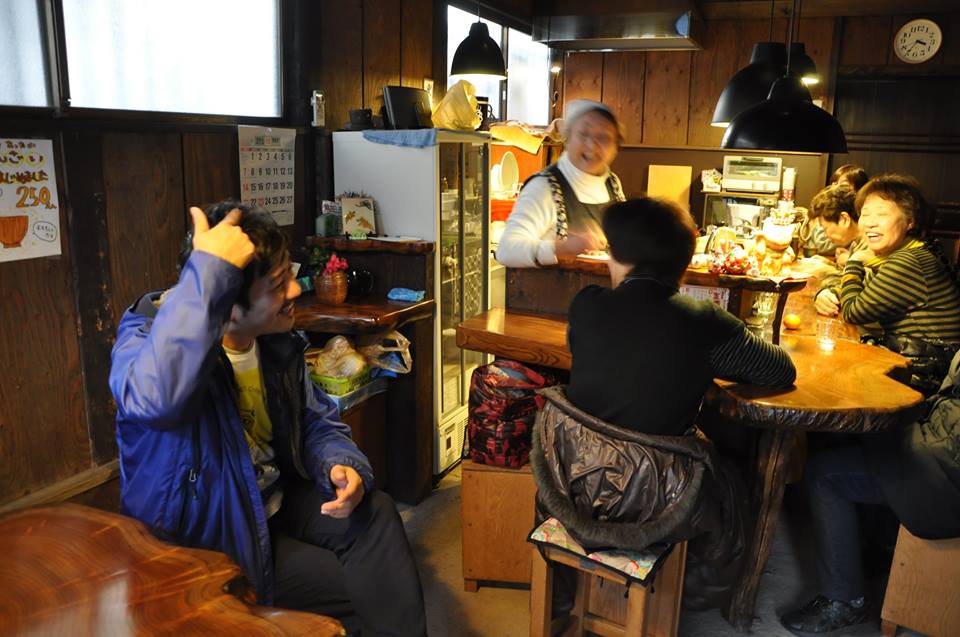
In the Kobe town development information magazine “My town talk”, we interviewed members of the local government and city development council about the city 20 years after the earthquake. →http://www.city.kobe.lg.jp/wagamachi/
One of the members’ quotes, “the earthquake was my 52nd birthday present” was impressive. Kobe has the strength to call sadness and hardship “a present”. The citizens of Kobe may have had the potential to care about their own city even before the earthquake.
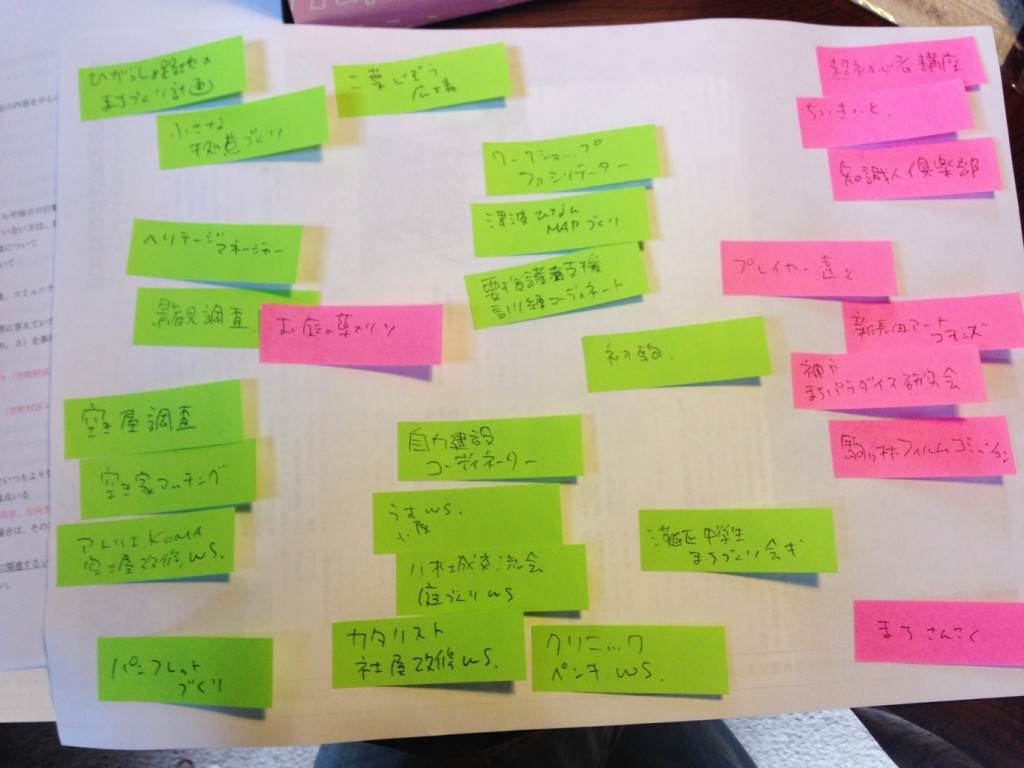 Photo: Post-its with the activities Mr. Kadono is currently working on. A great variety of activities!
Photo: Post-its with the activities Mr. Kadono is currently working on. A great variety of activities!If we are going to make a disaster prevention base, it’s better to make a fun place, isn’t it? That’s why we worked with artists to make it a place where children can play.
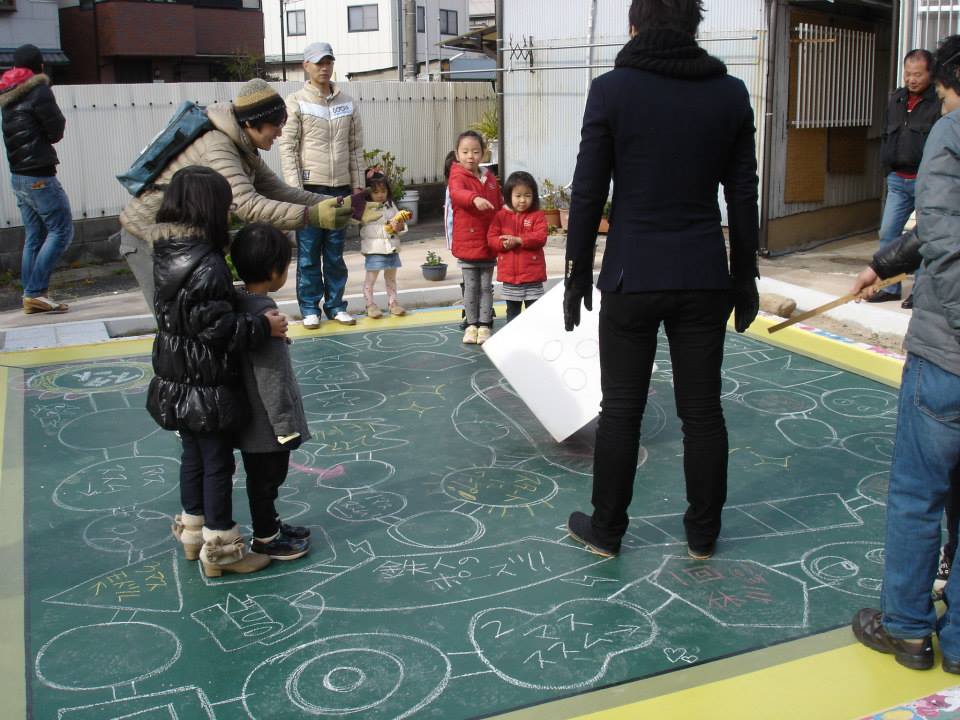 Photo: A huge blackboard (!) was placed on a vacant lot, where it became a disaster prevention base park called “Futaba Jizo Square”.
Photo: A huge blackboard (!) was placed on a vacant lot, where it became a disaster prevention base park called “Futaba Jizo Square”.I don’t think children will ever forget a fun experience. If adults tell them to come to a place with fun memories in case of a disaster, they will come. It is important to teach them about danger, but it’s also effective to give them happy memories. The more they see traces of our past in the city, the more they will love it.
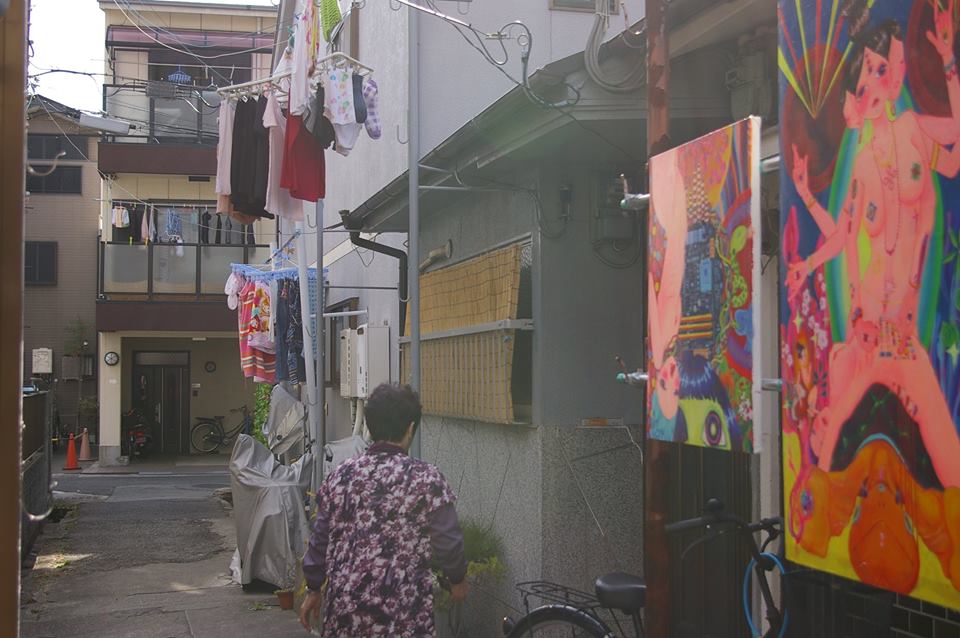 Photo: “Laundry Pole Gallery”, an alley in Komagabayashi where the residents enjoy art works and daily life scenes at the same time.
Photo: “Laundry Pole Gallery”, an alley in Komagabayashi where the residents enjoy art works and daily life scenes at the same time.There are many artists living in this town. My job is to share their work with the local residents when they have an urge to express something in the town. I know the head of the district’s residents association, and I personally love having fun, so my wish is to see more people raised in this town and people who are interested in and visit this town.
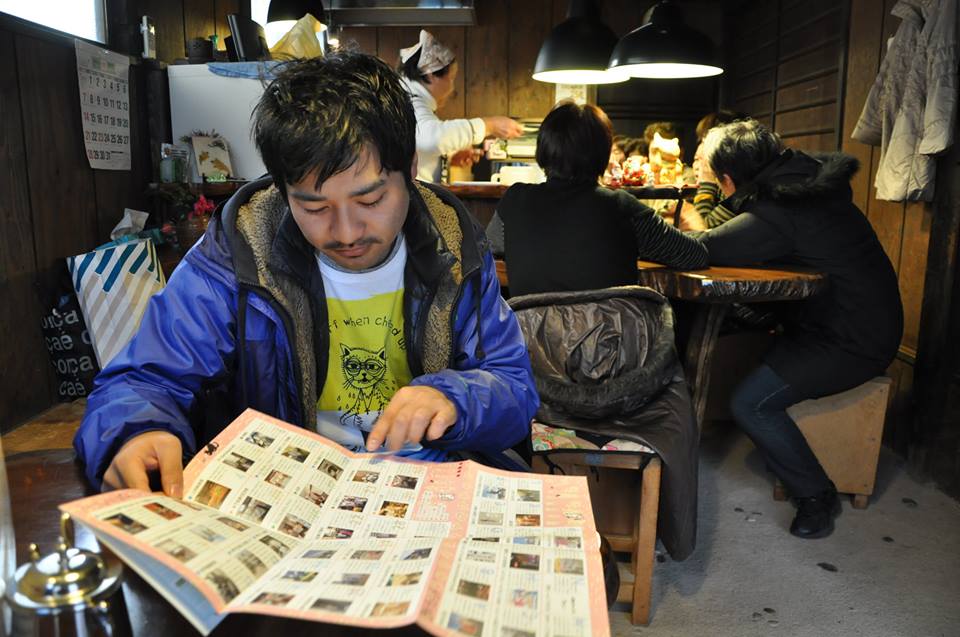 Photo: “Nagata Art Map”, with fun and artistic information
Photo: “Nagata Art Map”, with fun and artistic informationPeople in this town are so indulgent about what they like that it’s enviable. I have included them in the Nagata Art Map by Shinnagata Art Commons Committee. This information is a treasure for the residents. They make you love the city, don’t they?
Fumikazu Kadono
Born in Takarazuka City in 1980. He grew up in Kakogawa City and now lives in Kobe City. He experienced the Great Hanshin-Awaji Earthquake in his home in Kakogawa City when he was in ninth grade. He studied at the Department of Architecture in Hyogo Technical High School and Hiroshima Institute of Technology. While he was a student at the Institute, he visited Atelier ZO and Atelier IRUKA to learn about community-based architecture. He went back to Kobe after graduation and worked at Freedom Architects Design. He joined studio CATALYST in 2007 and has been working on city planning in Kobe. His work ranges from architectural design and project organization to editing.